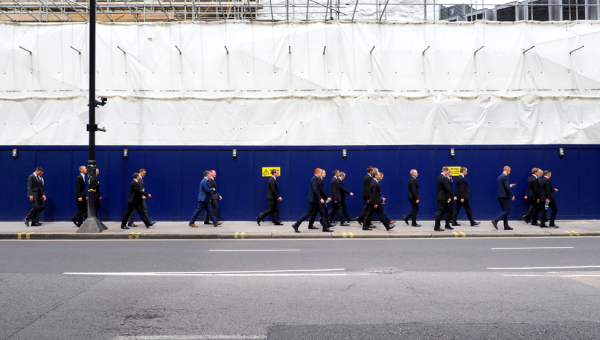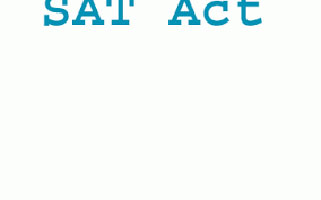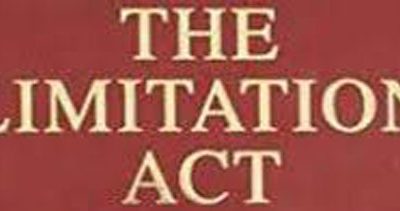
The Government Has No Obligation Either To Deny The Facts Alleged
The Government has no obligation either to deny the facts alleged by claimant or to disclose the basis of treating the property as abandoned property merely because the same is disputed by the claimant, Bangladesh Abandoned Buildings (Supplementary Provisions) Ordinance, 1985 (LIV of 1985), Section 5(2) and 7== *Government of Bangladesh, represented by the Secretary, Ministry of Works vs. Md. Jalil and others, 49 DLR (AD) 26.
Property listed as abandoned property__ The burden is on the claimant to prove that it is not an abandoned property. Presumption of the correctness of the entries in the Gazette Notification does not absolve the Government of disclosing the basis for treating the property as abandoned property when it is disputed, Bangladesh Abandoned Buildings (Supplementary Provisions) Ordinance, 1985 (LIV of 1985), Section 5(2), Bench constituted with Md. Abdul Jalil Naimuddin Ahmed, JJ. (Judgment delivered by Md. Abdul Jalil, J.) Writ Petition No. 1602 of 1988== *Jalil and another vs. The Chairman, Court Settlement and another, 44 DLR 288.
ABANDONED PROPERTY: DECLARATION: CASE: STARTING:
SCOPE:
After the repeal of Vested and Non-resident Property Ordinance vide Ordinance No. 92 of 1976 there was no scope for starting any VP case under the provisions of the aforesaid law afresh in accordance with the law of the Government and if any proceeding is started for treating a property as vested property, under the law that will be absolute without jurisdiction, Enemy Property (Lands and Buildings) Administration and Disposal Order, 1966, (para 5)== *Additional Deputy Commissioner (Revenue), Dhaka vs. Md. Mustafa Ali Mridha and others, 48 DLR 193. Ref: 1991 (Dhaka) and 114 of 1968 (Barisal.)
ABANSONED PROPERTY: DECLARATION: EFFECT:
The decision of the Court Declaring the property as not being abandoned property and excluding the property from the list of abandoned property was sufficient relief and from the date of such judgment the property stood excluded from the list of abandoned properties (Vide 48 DLR 291), Bangladesh Abandoned Buildings (Supplementary Provisions) Ordinance, 1985 (LIV of 1985), Section 5 == *Wahidul Haque vs. Bangladesh and others, 54 DLR 165 = 7 MLR 69.
After the decision of the courts of law declaring any property as not being abandoned property a further release order of the same property by the government is not necessary. From the date of such judgment the property stands excluded from the list of abandoned properties, Bangladesh Abandoned Buildings (Supplementary Provisions) Ordinance, 1985 (LIV of 1985), Section 5 == *Wahidul Haque vs. Bangladesh and others, 54 DLR 165 = 7 MLR 69. (The respondent are directed to implement the judgment and order passed in Writ Petition No. 2328 of 1994 in respect of the House. The respondent No. 5 is further directed to mutate the name of the petitioner in the records of the property maintained by his office within 60 days from this date failing which the writ petitioner will be at liberty to initiate a contempt proceeding).
BANDONED PROPETY: DECLARATION: LEGALITY:
DETERMINATION: NON CONSIDERATION:
The property in question is situated in road No. 138, the ”Kha” list mentions the property to be situated at Road No. 137. Such a notice, the High Court Division held, cannot be considered to be a notice in the eye of law and the treatment of the property in question as an abandoned property and enlisting it in the ”Kha” list is without lawful authority and is of no legal effect: The Government with The High Court Division found that the writ petitioners have always been in possession of the property in question supervision and managing the same in person, that the property in question was never abandoned
and that the question of the writ petitioner’s whereabouts being unknown does not arise. There is no allegation that the writ petitioners or their father are not Bangladeshi or that they were the nationals of any country which at any time after the 25th March, 1971 was at war with Bangladesh. The very inclusion of the property in question in the ”Kha”list shows that the writ petitioners were in possession. The Government the High Court Division also found that no copy of the notice under section 7 of the Ordinance was produced before it nor was it shown when and how it was issued and served upon the writ petitioners. Although the property in question is situated in Road No. 138, the ”Kha” list mentions the property to be situated at Road No. 137. Such a notice, the High Court Division held, cannot be considered to be a notice in the eye of law and the treatment of the property in question as an abandoned property and enlisting it in the ”Kha” list is without lawful authority and is of no legal effect. The writ petitioners need not have invoked the jurisdiction of the Court of settlement because the very inclusion of the property in question in the ”Kha”list is ex facie void for want of jurisdiction and is violative of Article 42 of the Constitution. The writ petitioners can come directly to the High Court Division for protection of their fundamental right even through an alternative remedy is available. The High Court Division relied upon certain decisions in support of this view (para 4), Constitution of Bangladesh, 1972, Article 102, Bench Constituted with ATM Afzal, CJ. Mustafa Kamal, Latifur Rahman, Md. Abdur Rouf and Bimalendu Bikash Roy Chowdhury, JJ. (Judgement delivered by Mustafa Kamal, J) == *Government of Bangladesh, represented by Ministry of works and another vs. Syed Chand Sultana and others, 51 DLR (AD) 24.
ABANDONED PROPERTY: LIST: EVIDENCE: VALUE:
Failure to comply with the requirements of law: No conclusive proof of abandoned property: The Government As the requirements of law have not been complied with the contention that publication of the list in abandoned buildings in the Official Gazette under section 5 of the Ordinance is a conclusive proof that the property is an abandoned property cannot be accepted, Bangladesh Abandoned Buildings (Supplementary Provisions) Ordinance, 1985 (LIV of 1985), Section 5 == *Rashida Begum vs. Chairman, Court of Settlement, Bangladesh Abandoned Buildings and another, 1 BLC 138.
ABANDONED PROPERTY: LEASE: CONDITION: VIOLATION:
REMEDY:
The Government has the right to cancel allotment of an abandoned property under Article 10(1) of PO 16 of 72 but before that is done it must be found that the allottee has violated any of the terms and conditions of the lease. The Government has also the right to affix standard rent for the suit premises, President Order No. 16 of 1972, Article 10(1) == *The Secretary, Ministry of Public Works, Government of Bangladesh vs. Md. Sharifullah and others, 18 BLD 93.
ABANDONED PROPERTY: RELEASE: SUIT: INSTITURION: FORUM:
The Government under the Jurisdiction of the Court of Settlement to release property from the list of abandoned properties: Whether a particular property is abandoned or not can well be adjudicated by the Court of Settlement as provided under section 7 of the P.O. No. 16 of 1972. The relief provided thereunder is obviously efficacious. Where the dispute involves contentious matters, such dispute cannot be decided by the High Court Division in its writ jurisdiction by-passing the court of Settlement which is the proper forum for appropriate relief, Bangladesh Abandoned Property (Control, Management and Disposal) Order, 1972 (PO No. 16 of 1972), Section 7 == *Bangladesh and another vs. Habib Zamil, 5 MLR (AD) 312.
ABATEMENT: SUIT: PRINCIPLE:
Death of one of several plaintiffs__ Setting aside of abatement__ Divisibility of interest of the plaintiffs__ As a logical sequel an abatement can be set aside at any time even beyond the period prescribed for making an application in that behalf if sufficient cause is shown explaining the delay on the principle that substantial justice shall take preponderance over technical consideration should always be kept in view in deciding whether or not there is sufficient case for the delay in making the application. There cannot be any presumption that the delay is caused deliberately or on account of culpable negligence or on account of malafides. An application for setting aside abatement may be treated as a composite application for condo nation of delay and setting aside abatement. While the learned Subordinate Judge considering the circumstances of the case exercising its discretion allowed the substitution after setting aside abatement on condition of payment of taka five hundred as compensation and such discretion when exercised with the ends of justice in view the High Court Division could not interfere with in revisional jurisdiction. When the interest of the plaintiffs is divisible then on the demise of one of such plaintiffs if no substitution is made the suit may abate not as a whole but as against the heirs of the deceased-plaintiff. It is only when the interest of the plaintiffs is indivisible that a suit abates as a whole not being sustainable with respect to the rest of the plaintiffs, Code of Civil Procedure, 1908 (V of 1908), Order XXII, Rule 9(2)(3) == *Abdul Kader Mondal and others vs. Md. Shamsur Rahman Chowdhury alias Md. Shamsur Rahman, 5 BLC (AD) 66.
It has been consistently held by the superior Courts in accordance with the Government law of the subcontinent that the provisions of Order XXII Rule 9(2)(3) of the Code should be liberally construed as the abatement of a suit of a legal proceeding precludes a fresh suit of a legal proceedings on the same cause of action without a trial of the case on merit: Abatement on the death of a party to a legal proceeding follows automatically unless his legal representatives are substituted within the prescribed time. For setting aside abatement the applicant has to prove that he had no earlier knowledge about the death of the deceased party and he has no laches and negligence in making the prayer for setting aside abatement, Code of Civil Procedure, 1908 (V of 1908), Order XXII, rule 9 (2)(3) == *Shakainath Mohanta vs. Md. Tatikunddin Mondal and others, 19 BLD 570. Ref: Azimunnessa vs. Rup Gazi, 39 DLR 6; Abdul Kader Mondal vs. Md. Shamsur Rahman Chowdhury, Civil Petition No. 40 of 1995. (This appeal is directed against the order passed by the Subordinate Judge in a Misc. Case under order 43 rule 1(k) of the Code of Civil Procedure rejecting the applicant’s prayer for substitution of the heir and heiresses of the deceased defendant No. 17 Nur Mohammad on setting aside abatement = Editor).
Abatement on the death of a party follows automatically, unless heirs are time substituted__ If abatement occurs the party seeking to set it side must prove that it had no knowledge of the death of the party to get rid of the bar of limitation for making substitution petition in time: It is evident that under the old Code of Civil Procedure, 1882, it was necessary for the Court to pass an order ofabatement but under the present Code no order need be passed by the Court. The abatment on account of death of a party is an automatic process if heirs of the deceased are not substituted within the prescribed time. What is necessary to prevent abatement is substitution of the heirs of the deceased within the prescribed period. If the subsitution is not made within the prescribed period then abatement occurs and in order to set aside the abatement and for substitution of the heirs of the deceased it is to be proved that within the prescribed period the party concerned had no knowledge of the death of the party concerned, Code of Civil Procedure, 1908 (V of 1908), Order XXII, rule 2-3 == *Master Abdul Aziz vs. Abani Mohan Mukherjee and others, 30 DLR (SC) 221.
ABATEMENT: SUIT: SETTING ASIDE: PETITION: GRANT: PRINCIPLE: It has been consistently held by the superior Courts of the subcontinent that the provisions of Order XXII Rule 9(2)(3) of the Code should be liberally construed as the abatement of a suit or a legal proceeding precludes a fresh suit or a legal proceedings on the same cause of action without a trial of the case on merit: Abatement on the death of a party to a legal proceeding follows automatically unless his legal representatives are substituted within the prescribed time. For setting aside abatement the applicant has to prove that he had no earlier knowledge about the death of the deceased party and he has no laches and negligence in making the prayer for setting aside abatement, Code of Civil Procedure, 1908 (V of 1908), Order XXII, rule 9 (2)(3) == *Shakainath Mohanta vs. Md. Tatikuddin Mondal and others, 19 BLD 570. Ref: Azimunnessa vs. Rup Gazi, 39 DLR 6;Abdul Kader Mondal vs. Md. Shamsur Rahman Chowdhury, Civil Petition No. 40 of 1995. (This appeal is directed against the order passed by the Subordinate in a Misc. Case under order 43 rule 1 (k) of the Code of Civil Procedure rejecting the applicant’s prayer for substitution of the heir and heiresses of the deceased defendant No. 17 Nur Mohammad on setting aside abatement = Editor). Abatement on the death of a party follows automatically, unless heirs are within time substituted If abatement occurs the party seeking to set it side must prove that it had no knowledge of the death of the party to get rid of the bar of limitation for making substitution petition in time: It is evident that under the old Code of Civil Procedure, 1882, it was necessary for the Court to pass an order of abatement but under the present Code no order need be passed by the Court. The abatement on account of death of a party is an automatic process if heirs of the deceased are not substituted within the prescribed time. What is necessary to prevent abatement is substitution of the heirs of the deceased within the prescribed period. If the substitution is not made within the prescribed period then abatement occurs and in order to set aside the abatement and for substitution of the heirs of the deceased it is to be proved that within the prescribed period the party concerned had no knowledge of the death of the party concerned, Code of Civil Procedure, 1908 (V of 1908) Order XXII, rules 2-3 == *Master Abdul Aziz vs. Abani Mohan Mukherjee and others, 30 DLR (SC) 221. ACT: CONTEMPT OF COURT: PUNISHMENT: OBJECT: ACT: CONTEMPT OF COURT: OBJECT: In a welfare State in order to administer justice lawfully, the government judicially and without fear of favour, certain protection is required for the Court of law and the process engaged in the administration of Justice from insult, annoyance, obstruction and willful disobedience and in order to maintain its honour, dignity, prestige and authority and thus law of contempt is the indispensable protection as a legal concept has evolved through ages as protection against signifying disrespect to that which is entitled to legal regard. Thus the law of Contempt of the Government has been described in the case of Aziza Khatun vs. State reported in 19 DLR 354 as under: “The law of contempt is a device to restore the balance in the scales of justice, when upset, by unauthorized interference with processes of law and punishment, which may lead to a cul de sac, has never been, by itself, the end of law. “(Para 17. Syed JR Mudassir Hussain CJ. Md. Fazlul Karim, MA Aziz and Amirul K Chowdhury, JJ. == *Shahudul Haque, IG Police and others vs. State, 58 DLR (AD) 150.


















Leave a Reply
You must be logged in to post a comment.